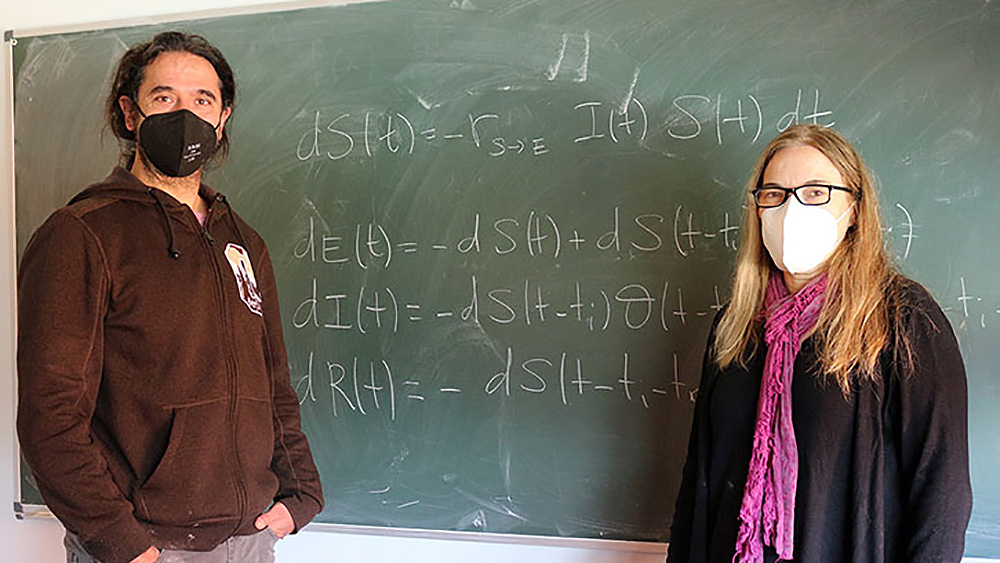Pilar Hernández, Alberto Ramos
Researchers from the Corpuscular Physics Institute (IFIC, University of Valencia-CSIC) have proposed a new formulation of the classic epidemiological models that allows taking into account realistic incubation and virus contagion times. Carried out in collaboration with the Institute of Theoretical Physics (CSIC-UAM) and the Donostia International Physics Center (DIPC), the work was published today in the PLOS ONE magazine and could provide more reliable data on the evolution of the pandemic.
The mathematical models of epidemics are an indispensable tool to predict the behaviour of infectious agents among the population. They are currently being used to analyse the evolution of the pandemic caused by SARS-CoV-2.
The work of this group of scientists is based on the SEIR model (Susceptible-Exposed or Pre-infectious-Infectious-Recovered). This classic model assumes that the time that an individual is exposed (is a carrier of the disease, but is not yet contagious) or is infectious (carrier and capable of infecting) follows a very specific mathematical pattern. According to this hypothesis, most individuals remain infectious for only a few days and the probability of being infectious decreases monotonously over time.
These assumptions are not motivated by epidemiological data, but by the need to simplify the mathematical treatment of the problem. The generalisation considered by the CSIC and DIPC researchers allows incorporating arbitrary incubation and contagion time patterns to the classic SEIR model.
“Our model, which we call uSEIR, allows us to incorporate realistic incubation and contagion time patterns. This is crucial, for example, to study the effect of confinement of those infected in a more rigorous way”, explains Pilar Hernández, Professor at the University of Valencia. Comparisons of the uSEIR model with various numerical simulations confirm that this new formulation more accurately describes the spread of the virus in the population.
“Our work also studies other hypotheses behind the classic SEIR model, such as the homogeneity in the spread of an epidemic. Thanks to comparisons with numerical simulations we have been able to study the impact of these assumptions”, says Alberto Ramos, a researcher hired thanks to the GenT Excellence program of the Valencian Community.
Currently, the researchers of this group are waiting to receive data on admissions collected in the hospitals of the Valencian Community to be able to study the evolution of the pandemic more precisely with the new uSEIR model.
Epidemiological models play a key role in decision-making in this pandemic. The improvement in the modelling of the spread of an epidemic allows obtaining more detailed and accurate information. “This work shows us that science is not a set of watertight compartments and that the transfer of knowledge between disciplines is fruitful”, says Pilar Hernández.
Reference:
Hernández P., Pena C., Ramos A. and Gómez-Cadenas J. (2021) A new formulation of compartmental epidemic modelling for arbitrary distributions of incubation and removal times. PLOS ONE https://journals.plos.org/plosone/article?id=10.1371/journal.pone.0244107


